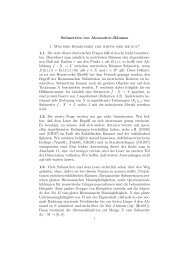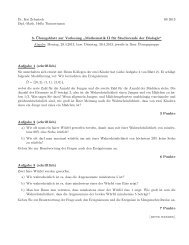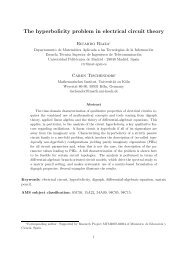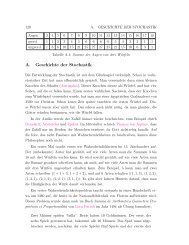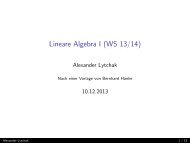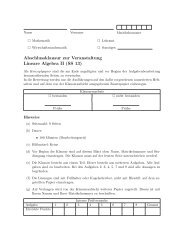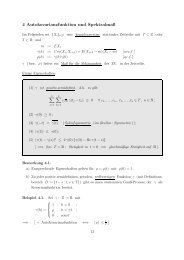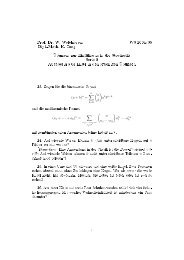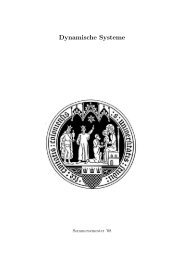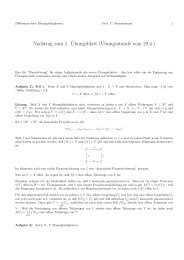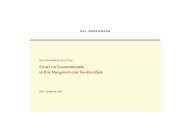Inhaltsverzeichnis - Mathematisches Institut der Universität zu Köln
Inhaltsverzeichnis - Mathematisches Institut der Universität zu Köln
Inhaltsverzeichnis - Mathematisches Institut der Universität zu Köln
Create successful ePaper yourself
Turn your PDF publications into a flip-book with our unique Google optimized e-Paper software.
DMV Tagung 2011 - <strong>Köln</strong>, 19. - 22. September<br />
Stefan Müller<br />
Korea <strong>Institut</strong>e for Advanced Study<br />
Continuous Hamiltonian and contact dynamics<br />
Continuous Hamiltonian and contact dynamics is an extension of smooth Hamiltonian and contact dynamics<br />
to continuous flows with nonsmooth ‘generating’ Hamiltonian functions. Although there does no<br />
longer exist a vector field linking a flow to its Hamiltonian, each continuous flow possesses a unique Hamiltonian<br />
in the appropriate sense, and vice versa. Moreover, the usual transformation laws continue to<br />
hold, and in fact, many other fundamental properties of smooth dynamics unexpectedly persist in this<br />
continuous framework.<br />
This survey will introduce the main players of the theory together with their most important properties,<br />
followed by a selection of interesting applications. As much as time permits, the initial motivation for this<br />
approach to some of the known C 0 -phenomena in symplectic topology will be explained. The talk is based<br />
on joint work with Peter Spaeth, earlier joint work with Yong-Geun Oh, and work of Augustin Banyaga and<br />
Spaeth.<br />
Frank Pfäffle<br />
<strong>Universität</strong> Potsdam<br />
On torsion, gravity and the spectral action principle<br />
In this talk closed Riemannian manifolds equipped with orthogonal connections (with torsion) will be<br />
consi<strong>der</strong>ed. First, I will review the classical Einstein-Cartan-Hilbert theory. Then, I will consi<strong>der</strong> Dirac<br />
operators which are induced by orthogonal connections. By Connes’ spectral action principle all physically<br />
relevant actions should be deducible from the spectral data of a suitable Dirac operator. The<br />
Chamseddine-Connes action is motivated by eigenvalue counting, and it predicts the right form of the Lagrangian<br />
of the standard model of particle physics. I will present a formula for the Chamseddine-Connes<br />
action in presence of torsion and discuss critical points. This project is joint work with Christoph Stephan.<br />
Thomas Schick<br />
<strong>Universität</strong> Göttingen<br />
Metrics of positive scalar curvature: existence and classification<br />
Fix a compact smooth manifold without boundary. Does it admit a Riemannian metric with positive scalar<br />
curvature? The index of the Dirac operator and the (non)-existence of harmonic spinors, as well as<br />
many “higher” refinements give rise to obstructions. On the other hand, it there are Riemannian metrics<br />
of positive scalar curvature, how does the space of all such metrics look like? What are its homotopy<br />
groups? In the talk, we will present new developments concerning obstructions. The focus, however will<br />
be on the construction and detection of interetsting topological features of the space of metrics of positive<br />
scalar curvature and of its moduli space.<br />
96




